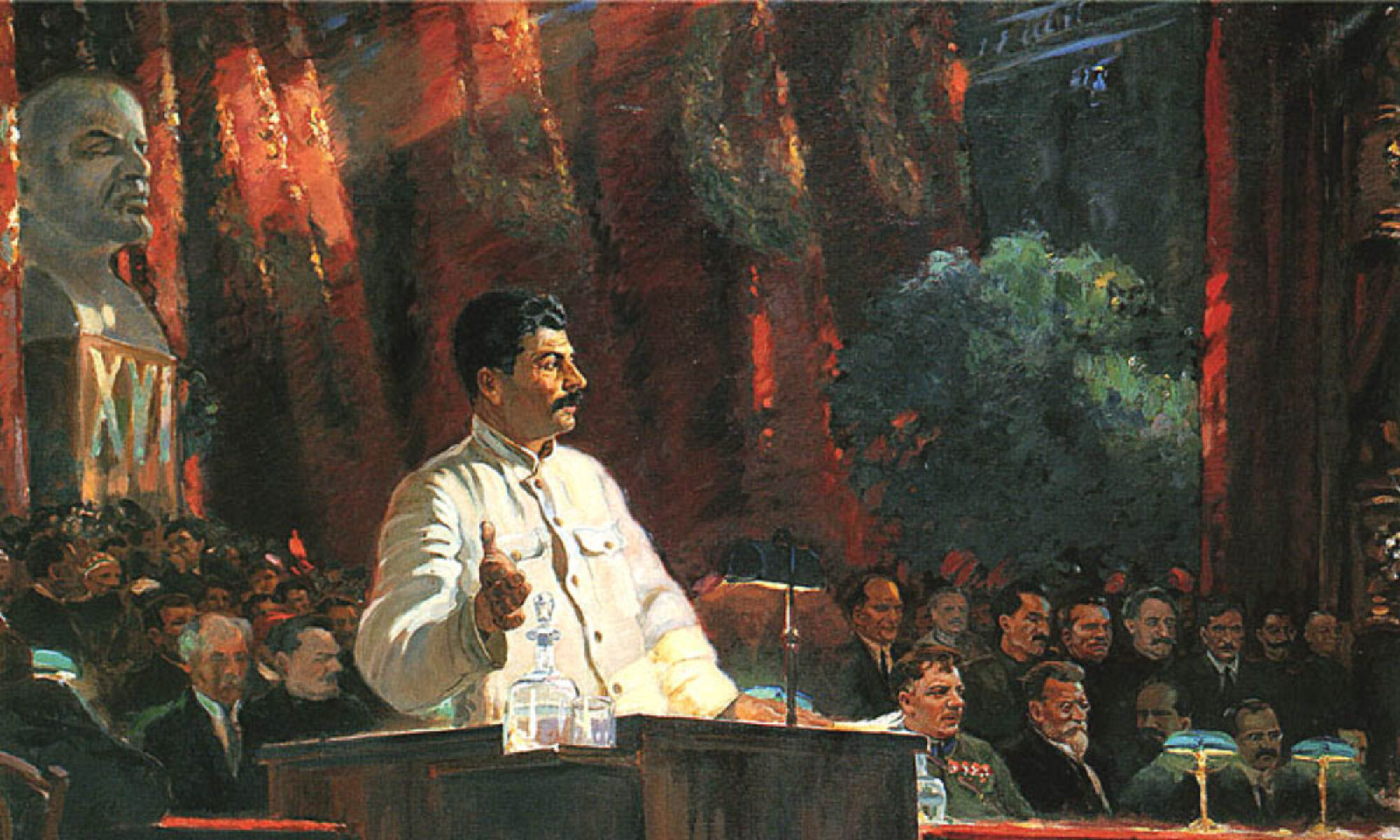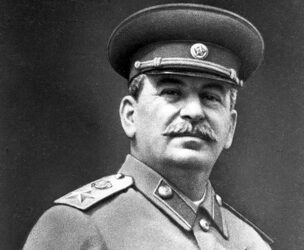In the film Circus, directed by Grigori Aleksandrov, it begins with a white woman in the United States being chased because she has a bi-racial child. She flees to Soviet Union, where she begins her job as a circus performer. Eventually the people find out she has a bi-racial child, but instead of trying to exile or imprison her, she is welcomed and told that her child would be loved by all.
This film was made as propaganda to get people, most likely black people to immigrate to the Soviet Union. I examined a different issue to that of race. I found it interesting, because she is a single mother, that she does not face any extra hardship. In the United States, it was not widely socially acceptable to be a single mother until the early 1990’s, and some could say that is pushing it. Is this because the Soviet Union was a more pro feminist country, or just because this movie was mainly propaganda for those living outside the Soviet Union?
Circus
As the film begins, we watch a woman run, with what seems like a child, from a violent crowd in the Southern states of America. She frantically runs into a train and finds some sort of safety. However, little did she know, this was going to be the beginning of an abusive and manipulative part of her life. This German man, more representative of the Nazis raging though Europe, gives her a job in the circus where she is a shining star. Here, she meets the romantic love interest of this film.
What I found interesting when it comes to the film, is the use of colors. Yes, this is a black and white film, but there is a progressive shift in dark tones to lighter tones throughout the film. For example, the German man is mostly dressed in black where as the love interest, is often times dressed in white. Even Marion has a color transformation in which her hair shifts from dark to her natural blond.
This movie’s plot alone shows the greatness of the USSR in which racism is not tolerated and the pro-communist music pushes the Stalinist agenda, but what do you think the significance of this cinematic technique is? Do you think it plays a role in subliminal messaging? Are there any other small details that the directors of this movie include that make you favor Russia?
The Circus
The 1936 Soviet film, The Circus presents Western Cultures such as the United States and even Germany as being highly racist. The film begins with Marion, a circus performer, being chased by a mob who are throwing rocks and yelling at her because she has a child of color. This scene takes place in “every town USA”. Marion ends up joining a circus in the Soviet Union and due to her abusive German agent, she tries to keep her bi-racial baby hidden. Once her secret is revealed, she finds that the people of the USSR are accepting of everyone. The circus director, Ludvig tells her, “Soviet people love all children: white, black, green, and pink with stripes”. Do you think that this message would have been necessary if in fact it were true?
Circus
Just like the last film we viewed, Circus (1936) is certainly a strong piece of Soviet propaganda, but it takes a different direction. As time went on and the Soviet government increased its level of focus on spreading its ideology around the world. This depiction of an accepting society ready to embrace just about anyone, unlike America, is probably a good message to send. That is where my question comes into play. Why does the Soviet government need to send this message to the average citizen? The government tightly controlled the flow of information to its people. If it wanted people to know about how terrible America was, they could have easily (and did) fabricate news and events happening around the world. It seems to me that this movie was made more for an audience outside of the Union. Another interesting question I have been thinking about is whether or not the film makes a valid point. In 1936, a film like this released in America would probably have spelled the end of the line for the studio and actors who made the film. At the same time, the Soviet Union was not nearly as accepting as the depiction at the end of the movie.
Film in the Stalinist Era
There were two cultural revolutions taking place at the same time: sound film and Socialist Realism. The introduction of sound film lead people to believe movies would become bourgeois again, and that they needed to work hard to ensure it remained in the realm of the everyday person. There was an argument made that Soviet film needed to surpass the purely aesthetic films made by the West. This created the idea of ‘cinema for the millions’, or making the films “useful, intelligible, and familiar to the millions”. In response, the All-Union Creative Conference on Cinema Affairs laid out a set of rules for films to hold on to Socialist Realism ideals, much like the Congress of Soviet Writers did for literature.
Soviet cinema became a crucial aspect in creating and spreading the idea of a mass utopia as well as other Socialist Realism ideals. The enjoyable and relatable scenes in movies became an effective propaganda tool, much like novels such as How The Steel Was Tempered. The invention of sound film lead to the ability to create more accessible, relatable cinema that was able to spread propaganda more effectively than ever before.
Do you think that movies would have been an effective propaganda tool if they did not have sound film technology in the Soviet Union?
Propaganda in Chapaev
In viewing this film there are a couple of instances of clear propaganda that stand out. The first being the set of scenes revolving around the stolen pig. The old woman claims that there is no difference between the reds and the whites if both are going to be stealing from the peasants (25min Chapaev). Then we learn that the stolen items have been returned and we hear the speech to the men. In that speech we hear “who are you robbing? You’re robbing your brother the peasant!” and “we’re sacrificing our lives for that peasant and for the worker.” ( 31min Chapaev) Then later when they are actually on the battlefield there is a clear difference between the whites and the red. There is one side with much more professional uniforms and a typical military walk. Then there is the side wearing peasant clothes. (1hour Chapaev)
To include the interaction with the peasants was a clear message to the people that since the first days of the war the fight has been for you. There has never been a point where it has not been the workers vs. the elites. Do you think that there were any other moments in the film that were clear propaganda? Do you think that having a historic film about any country’s founding serves as propaganda?
Soviet Film
In the subheading “Cinema for the Millions,” we are provided the quote “every film must be useful, intelligible, and familiar to the millions” (215). This is stated in contrasted to a crisis the industry was facing due to genre/craft to focusing on the many. Additionally, we are provided context on how Soviet film was different (or needed to be different) than Hollywood. One of the most notable differences that I thought Kaganovsky was trying to draw out was the pro-Stalin/Soviet messaging that had to be present. While there were pro-USA musicals, the propaganda machines of each country seem to be much different. How do you think Soviet Realism is adapted to film? How is it differing from Hollywood? Are there elements you like?
The final chapter
On the end of page 475 and page 476 he talks about finishing up this book and sending to get approved. He states that the fate of his book would decide his own fate. If the manuscript was rejected, it would mean the end of everything for him. This part of the story shows that how much he was really into this getting approved and how hard he was on himself. Also, you can see the sense of relief and excite me when he gets the telegram that the manuscript was approved and started to get published. His dream has come true.
The Death of Comrade Lenin:
The pattern of Socialist Realism follows a master plot. You know that a crisis must rise throughout the story. In How the Steel is tempered, we see Pavel’s own crisis and how he must overcome his crisis. But we also get to see the problems the Soviet Union had to deal with on a national level as well and how their leadership was very cruel to their infrastructure, particularly Vladimir Lenin. You also see how other members of the Bolshevik Party regarded him. As the Secretary of the Shepetovka District Committee said about him “Comrades! Lenin, the leader of the world proletariat, is dead! We have suffered an irrevocable loss, for the man who founded the Bolsheviks Party and taught it to be implacable towards its enemies is now no more. The death of the leader of our party and our class serves as an appeal to the best sons the proletariat to join our ranks” (447). Lenin was described as a true visionary to them, and one could even call a prophet. Could it be argued that the death of Comrade Lenin was the ultimate crisis the Soviet citizens had to face?
Life and Work Ethic
Pavel cares most in life about working hard, and doing what he can for his country. He is severely depressed when he realizes he is paralyzed and will be an invalid. On page 433, he states, “Man’s most precious possession is life itself… and one should make haste to use every moment of life, for after all an illness or accident may suddenly cut it short.”(Ostravsky) He values his work as the single most important part of his life. He works endlessly to find a way to support his country, while being told countless times that he is to stop working. He even considered ending his life, but decided against it as he had not employed every last option. He always manages to find a way, even in his complete blindness with only the ability to move his right hand, he wrote a manuscript. Should the credit for his perseverance be given to himself, or to the Soviet society that he holds so dearly?

